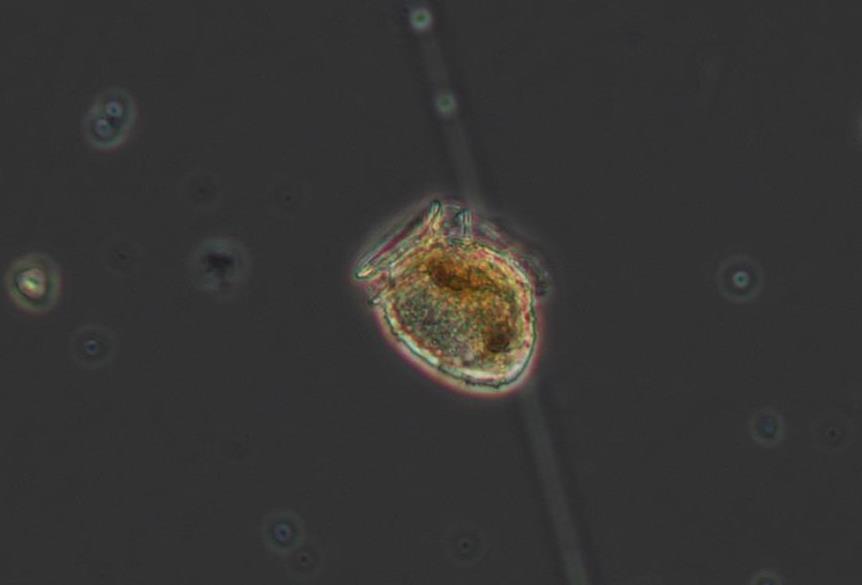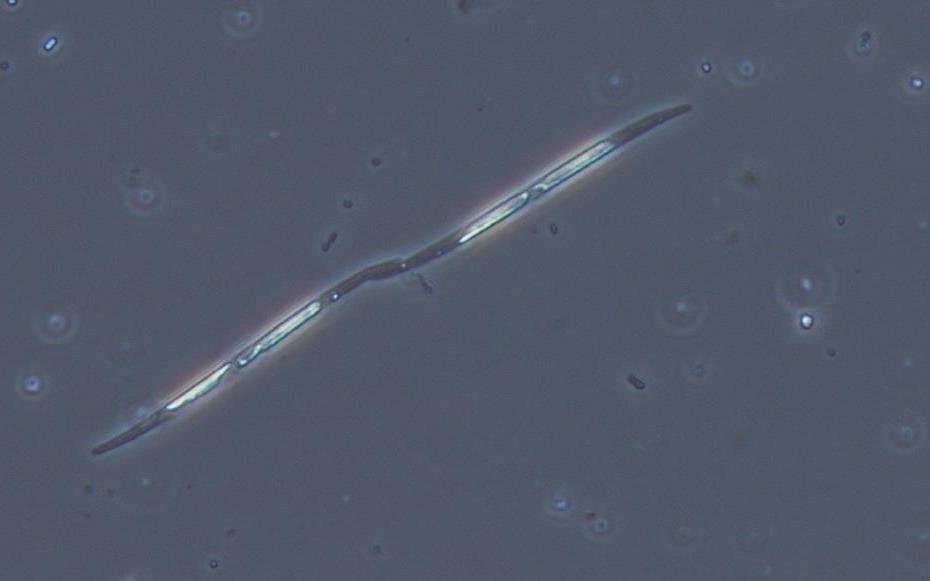Phytoplankton , or vegetable plankton, includes all micro-algae that live in water. It is the basis of the food chain in seas and oceans, in particular for filtering shellfish for which it is the main food source.
Phytoplankton develops in waters mainly in spring and summer when growing conditions are favourable (warmer water temperatures, increased light, nutritive inputs from rivers).
What risks are connected with phytoplankton ?
Most species of phytoplankton are completely harmless.
However, some species produce biotoxins (also referred to as phycotoxins), which can accumulate in shellfish and thus pose a sanitary risk for consumers.
In Brittany, the risks for human health are mostly associated with the development of micro-algae belonging to three main genuses:

- Dinophysis
the toxic species belonging to this genus produce diarrheic toxins known as DSP or Diarrheic Shellfish Poisoning toxins. Symptoms appear quickly (within 30 minutes to 12 hours) after the consumption of the contaminated shellfish and consist of diarrhoea, vomiting and abdominal pain, generally without a fever. This genus is mostly found on the Atlantic coast.

- Alexandrium
the toxic species belonging to this genus produce paralysing toxins known as PSP or Paralytic Shellfish Poisoning toxins. Symptoms generally appear very quickly (within five to 30 minutes) after the consumption of the contaminated shellfish and consist of a tingling sensation, numbness, nausea and dizziness in the case of light poisoning, and uncoordinated movement and localised paralysis (arms, mouth) in the case of severe poisoning, which can result in death in the case of paralysis of the respiratory muscles. This genus is mostly found in estuarine waters.

- Pseudo-Nitzschia
the toxic species belonging to this genus produce amnesic toxins known as ASP or Amnesic Shellfish Poisoning toxins. Symptoms appear within 24 to 48 hours of consumption of the contaminated shellfish. They include digestive disorders (nausea, vomiting, diarrhoea), which may be followed by neurological disorders (headaches, memory problems) and, in extreme cases, seizures and coma that can lead to death. Pseudo-nitzschia are present in all coastal environments during most of the year with low toxicity; they become a problem when they are present in a very large quantity.
All of the toxins produced by these algae share the characteristic of being resistant to high temperatures and are therefore not destroyed by cooking.
How is phytoplankton monitored in Brittany ?
The monitoring of phytoplankton and toxins is coordinated by IFREMER through its two networks: REPHY and REPHYTOX. One of the aims of these networks is to detect potentially toxin-producing species of phytoplankton in the water, then look for these toxins in shellfish from shellfish farms (i.e. oyster parks, Bouchot poles, etc.), or natural shellfish beds.
More about the IFREMER monitoring network for phytoplankton and phycotoxins.

